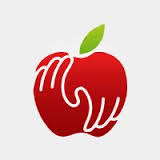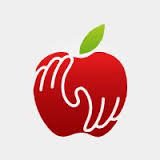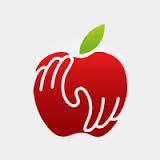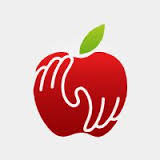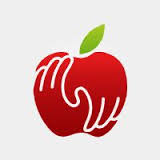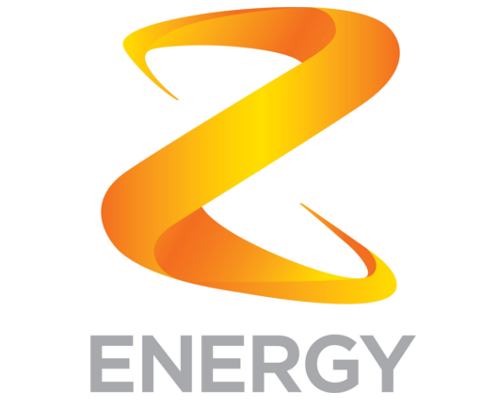Title Page
-
Document No.
-
Audit Title
-
Conducted on
-
Auditor
-
Auditee
-
Location Site Name
-
Location
-
Auditor sign upon completion
Premises (Building Exterior)
Design, Construction & Maintenance
-
Floors, walls, ceilings, doors and windows materials are smooth, cleanable, impervious, durable, suitable, clean and in good repair
-
Floors, walls, ceilings, doors and window materials are suitable for food manufacturing premises
-
Overhead walk ways are shielded underneath
-
Product flow / employee traffic patterns are designed to prevent cross contamination
-
Plant schematic showing product and employee flow is available
-
Floors are slopped to trapped drains
-
Premises are connected to sewerage system, sewerage pipes do not pass over or through production
-
Sufficient, leak-proof, labeled waste storage containers available within plant, located to prevent cross contamination. Waste removal at least daily.
-
Air filters present are cleaned or replaced as per maintenance schedule
-
Ventilation is adequate to prevent accumulations of dust, condensation, steam and to remove contaminated air
-
Air used as a processing technique is sourced (intake) and treated (filtered) to reduce sources of contamination
-
SOP and records for checking, cleaning and replacing air filters and for checking air flow and duct cleaning are available
-
Equipment cleaning area is located (and / or cleaning is scheduled) so as to prevent contamination of product and packaging.
-
Drainage in cleaning rooms is adequate
-
Documented SOP and corrective action protocol / records for building inspections is available for review
Sanitary Facilities
-
Sufficient numbers of hand washing stations, conveniently located in processing areas, wash rooms and elsewhere as needed
-
Hand washing stations have hot and cold water, soap dispenser, paper towel or air dryers, waste receptacle, plus sanitizer if required
-
Wash rooms, lunch rooms and changing rooms are well maintained
-
Taps are hands free
-
Hand washing signs are posted
-
Wash rooms are adequately ventilated and do not open directly into processing areas
-
Boot dips are available at entry point to processing areas
-
Lunch rooms and changing rooms are adequately ventilated and do not open directly into processing areas
-
Documented SOP / corrective actions / protocols / records for checking wash room / hand wash / sanitizer / facilities for cleanliness, supplies and sanitizer levels
Lighting
-
Adequate lighting intensity for safety and inspections
-
Lights / windows are adequately shielded against breakages
General Environment
-
Building is not in close proximity to environmental contaminants
-
Surrounding grounds / driveways are free of garbage and debris
-
Surrounding grounds are free of rodent harborage (e.g. overgrown areas / disused items)
-
Sufficient leak proof, covered garbage disposal bins are available
-
Surrounding grounds are adequately drained to prevent pooling of water and or water entry into the building
General Design, Construction & Maintenance
-
Building exterior designed and maintained to prevent entry of pests. Door and windows are screened
-
Air intake is appropriately located and screened against pest entry
-
Roof, walls, doors, windows and foundations are maintained to prevent water leakage
-
Adequate exterior lighting
-
Access doors are designed to prevent unauthorized entry (e.g. self closing, locking)
-
Documented SOP, corrective action protocol, records for exterior building inspections
-
Documented security program in place
Water, Ice & Steam
-
Water quality SOP in place
-
Water, ice and steam are analyzed at a frequency adequate for confirming potability
-
All required permits / approvals are in place
-
Non-Municipal water supplies are treated and tested to ensure potability
-
Water storage facilities are treated and monitored
-
Documented water treatment and testing SOP for non-municipal water supplies. Records include water source sampling, analytical results, analyst and date
-
Documented SOP, corrective action protocol, and records for recirculated water system treatment and testing
-
Documented SOP, corrective action protocol and records for water storage facility treatment and testing
-
Hoses and taps have back flow prevention devices
-
Water pressure / temperature and volume is adequate for all uses
-
If bottling water, access to water source is adequately p[protected
Transportation, Receiving & Storage
Incoming Materials
-
Incoming food, non-food items, packaging received in area separate from processing area
-
Carriers are inspected for cleanliness, temperature and suitability for food
-
Incoming materials are inspected to ensure they meet specifications: Approved supplier, letter of guarantee, certificate of analysis, master list of ingredients, suppliers available
-
Incoming materials inspected for condition and temperature
-
Receiving temperature log is maintained
-
Lot numbers of ingredients is recorded
-
Allergens are clearly identified
-
Guidelines for rejections are available
-
SOP are in place for cleaning & sanitizing carriers especially bulk tankers
-
SOP for receiving is in place
-
SOP (and records) for returning rejected shipments and how returnable items should be identified
-
Incoming materials are handled to prevent damages or cross contamination
Storage of Incoming materials and finished products
-
Refrigerated storage <4C
-
Frozen storage <18C
-
Chemicals are handled separately from foods to prevent cross contamination and stored in a clearly identified area
-
Allergens are stored separately in clearly identified areas or containers
-
Returns, defective, suspect product is clearly identified and isolated in designated area
-
Stock rotation practiced (incoming and finished product) and there is a documented SOP in place
-
All food is stored off the floor and away from the walls
Finished Product Control
-
Carrier is inspected for cleanliness, temperature, suitability for food
-
Outgoing product is checked for condition and temperature
Allergen Identification
-
Allergen containing raw materials are identified at receiving and marked
-
Colour coded utensils are used for allergens
-
Master list of products / ingredients in each / allergens in each is available
-
Allergen control SOP is in place for transport, receiving, storage and shipping
-
List of allergens is available
Allergen Production Control
-
Allergen control SOP in place for production
-
Sanitation SOP address risk of allergen cross contamination
-
Production sequencing in place to prevent allergen cross contamination
-
Rework SOP in place to prevent allergen cross contamination
-
SOP for staff allergen control training
Product Labeling & Packaging
-
Product labeling meets local requirements
-
All possible allergens in product are declared on the label
-
Documented SOP in place to prevent mislabeling
-
Documented procedure in place to review and update labels
Supplier Quality Assurance Program
-
Letters of guarantee (or certificates of analysis) are available for all incoming materials
-
Supplier approval process is in practice
Approved Supplier Records
-
List of approved suppliers is available
-
Master list of ingredients is available with specification sheets for each
Product Specifications
-
Product specifications are available indicating ingredients and sub-ingredients
-
Product specifications are monitored through evaluation of product
Equipment
Equipment Design & Installation
-
All equipment is food grade presenting no hazard to product
-
Equipment is designed to ensure clean ability
-
Equipment is accessible for cleaning
-
Equipment allows for proper drainage
-
Where needed equipment is directly exhausted to the outside to prevent accumulations of condensation
-
Equipment specifications are available
Food Contact Surfaces
-
Food contact surfaces are smooth, non-corrosive, non-absorbent, non-toxic, free from chips, cracks, crevices and pitting
-
Utensils used for food, for allergens, for non-edibles are clearly identified by colour coding
-
Chemicals, paints or lubricants used on food contact surfaces are food grade
Equipment Maintenance & Calibration
-
Documented preventative maintenance schedule is available and includes lists of equipment, maintenance procedures and frequency of checks
-
Maintenance schedule is followed
-
Maintenance records are complete
-
Working calibration equipment is available and / or off-site calibration is available
-
Documented, validated calibration SOP is place especially for critical monitoring equipment
-
Calibration records are complete and current
-
Repair program is in place including names and contact numbers of repair personnel or company
Personnel
In House Hygiene Policy
-
Written hygiene policy includes:
-
Hand washing technique
-
Proper use of disposable gloves
-
Correct way to wear hair restraints
-
Removal of Jewelry
-
Correct way to wear uniform
-
No personal items
-
No eating / chewing / drinking in food production area
-
Documented illness and injury policy includes:
-
Not working with food if suffering from or carrying infectious disease
-
Cuts shall be covered completely with a water proof covering
-
Employees shall advise management if they have a disease communicable through food
-
There is an SOP for hand washing available
Visitor Food Safety & Hygiene
-
Visitor food safety & hygiene policy is posted
-
Visitor policy includes:
-
Sign in and wear ID
-
Wear protective clothing when applicable (i.e. hair restraint, coverall, boots, safety gear)
-
How access is controlled and limited to relevant areas only
Food Safety & Hygiene Training
-
A documented training program for food safety and hygiene includes:
-
Skills and knowledge objectives
-
Importance of food safety & hygiene
-
Training methods and materials include professional training if required
-
Skills knowledge is evaluated and updated frequently
-
Hygiene training records are on file
-
Training program is reviewed at set intervals and updated as needed
Technical Training
-
Documented training program for technical skills (critical processes and operation of equipment, monitoring, sanitation, calibration, maintenance, general plant knowledge) includes:
-
Skills & knowledge objectives
-
Importance of task
-
Detailed SOP for tasks
-
Critical Limits, monitoring procedures, corrective actions, record keeping and verification for CCPs and monitoring SOPs
-
Training methods and materials include professional training when required
-
Skills and knowledge are evaluated and updated
-
Technical training records are on file
-
Training program is reviewed at set intervals and updated as needed
-
Comprehensive training program for all employees
Sanitation & Pest Control
Sanitation Program
-
Master cleaning schedule is available and includes in-process, daily, weekly, monthly, annual and periodic cleaning tasks and projects
-
Documented SOP is available for all tasks and areas relevant to food safety
-
Documented SOP includes chemicals, concentration required, water temperature / pressure and contact time
-
Chemical dilutions are controlled
-
Premises are in a sanitary condition
-
Pre-operational and in-process sanitation checks / inspections are made to verify cleaning
-
Routine verification monitoring (observation or micro testing) is done
-
Sign-off sheets are available for cleaning / monitoring / verification of sanitation tasks
Pest Control Program
-
A documented pest control program includes:
-
Name of persons responsible for pest control
-
Name and contact information of pest control company on the contract licence
-
Description of the pest control measures taken on the premises
-
List of chemicals used, MSDS, import licences (where necessary) concentrations, locations where applied, method and frequency of application
-
Schematic map showing the location of pest control devices
-
Monitoring of pest control devices (person responsible and frequency)
-
Use of poison bait is prohibited inside the facility
-
No evidence of pest activity in premises
-
Only approved pest control chemicals are used
-
Service reports are on file and detail what was done, what chemicals were used, and any corrective actions taken or required
Recall & Withdrawl
Complaint Handling
-
Customer complaints are documented and investigated using root cause analysis
-
Records are maintained regarding follow up and corrective actions taken
-
Documented SOP for handling complaints is available
-
Customer complaint form is available for customers
Recall System
-
Key persons are responsible for recall and their roles
-
Master plan of ingredients and supplier contact information is available
-
Master list of finished products and customer contact information is available
-
Documented methods to identify, locate and control recalled product (finished product and recalled raw materials)
-
Ingredient traceability is through lot numbers or codes
-
Finished product traceability is through lot numbers or codes
-
Mock recalls are performed and documented for finished product recall
-
Mock recall is performed and documented for raw material recall
-
Corrective actions regarding recalls are documented
-
Records of production, inventory and distribution by lot are available
-
Codes identify establishment, day, month and year of production
-
If packing for private label owners, lot ID allows for distinguishing each private label product
-
Codes used and their meaning is available
Recall Notification
-
Names and contacts for those who are required to be notified in the event of a recall are available
-
Amount of affected product produced (inventory and distributed)
-
Product name, size, code or lot numbers of affected product are recorded
Critical Control Points
-
HACCP Team in place
-
Written commitment from management regarding PRP and HACCP program
-
HACCP Team leader is adequately trained
-
HACCP team members responsibilities are delegated in the SOP
-
Product back ground form is completed for each product group or process
-
For each product a list of ingredients with sources / suppliers identified for each and all allergens associated with product are identified
-
For each process a plant schematic showing all equipment, product flow and employee flow is available
-
For each process a process flow diagram is completed
-
Hazard Analysis work sheet is completed for each product group / each process
-
For each process all BCP hazards are identified and described for each process step, including cross contamination and equipment hazards
-
Risk analysis (severity of risk) is done as part of the hazard analysis
-
Control, measures are identified for each hazard
Control Points
-
CCPs are identified
-
For each identified hazard a determination is made as to whether it is fully controlled by a PRP or a CCP
-
A CCP decision tree is used to justify
-
Critical Limits are identified for each CCP
-
Reliable sources / data / expertise used to determine critical limits, i.e. validation by HACCP team. Sources are documented
-
CLs state specifically what standard must be met at the CCP
-
CLs can be accurately and consistently observed and measured
-
Monitoring procedures are identified for each CCP
-
Monitoring procedures are defined in the SOP and include equipment used, frequency, persons responsible and records
-
Monitoring method, equipment validated by HACCP team
Record for Control of Operation
-
Batch reports completed for product
-
All critical limits are monitored and records completed
Deviations / Corrective Actions
-
Corrective action plan in place for each CCP
-
Corrective action report forms are available and include confirmation that the problem was addressed
-
Detailed SOP is available for each corrective action for each possible deviation from CL at CCP
-
Triggers for corrective actions are accurately defined
-
Extent of authority to take corrective action is clearly defined
-
Amount of product included in the corrective action is clearly defined and mean of identifying affected product is defined
-
Disposal of affected product is clearly described with appropriate SOP
Verification Procedures
-
Verification methods are identified for each CCP
-
Verification methods are validated
-
Verification of monitoring is done by someone other than persons doing the monitoring
-
Verification of monitoring is done at appropriate frequency
-
Monitoring records are available
-
Corrective Action records are available
-
Verification records are available for checking
-
Training records are available for checking
Verification of the HACCP System
-
HACCP plan requires annual verification of systems, records, staff evaluations, PRPs, CCPs, on-site observations and external audit
-
Annual verification of PRPs, CCPs (& CL monitoring), HACCP preliminary steps, supplier review, certification, monitoring and CA
-
Verification of performance of system checks, testing equipment for CCPs / PRP, sampling, testing for hazard control efficiency
-
Review of validation data
-
Records and follow up on inadequacies found in system checks or audits
-
Prompt correction for inadequacies
-
Procedures in place to repeat verification to ensure inadequacies were corrected
-
Audit records are completed and signed off
HACCP System Records
-
HACCP study and plan is available (preliminary documents needed to write the HACCP Plan)
-
CCP monitoring templates are available, and follow a controlled document procedure
-
Process deviation corrective action template is available, and follows a controlled document procedure
-
HACCP team meetings are recorded
-
Hold / Release memos are adequately designed and appropriate
-
Hold / Release documents are authorized only be top management
-
Validation data is documented
-
Verification and audit records are available for checking
